Table of Contents
Have you ever felt the sun’s intense heat beating down on your roof during the summer months? Or maybe you’ve cranked up the air conditioning to combat the sweltering heat, only to see your energy bill skyrocket? If so, it’s time to consider installing a cool roof. A cool roof is a roofing system designed to reflect more sunlight and absorb less heat than a standard roof. These roofs are typically made with UV-reflective materials, such as white or light-coloured coatings, tiles, or shingles, that reflect more of the sun’s rays and help keep the building cooler.
So if you’re tired of sweltering summers and high energy bills, consider installing a cool roof. Not only will you be doing your part to combat climate change and reduce your carbon footprint, but you’ll also be improving your quality of life and saving money in the process.
Types of Cool Roofs
Roofs play an important role in the energy efficiency of buildings. They not only protect the building from external elements but also have a significant impact on the internal temperature of the building. The colour and materials of the roof can determine how much heat is absorbed and reflected, which in turn affects the energy consumption and comfort level of the building.
Reflective and emissive cool roofs are two types of roofs that are designed to reflect sunlight and heat away from the building, thus reducing the amount of heat that is absorbed into the building. Let’s take a closer look at these two types of cool roofs.
Reflective Cool Roofs

Reflective cool roofs are designed to reflect sunlight and heat away from the building, reducing the amount of heat that is absorbed into the building. These roofs are typically made of materials that are light in colour, such as white or light grey, and have a high solar reflectance. Solar reflectance is a measure of a material’s ability to reflect sunlight. Reflective cool roofs are effective in reducing the amount of heat absorbed into the building, which in turn reduces the need for air conditioning and lowers energy costs. These roofs also help to reduce the urban heat island effect, which occurs when urban areas are significantly warmer than surrounding rural areas due to the absorption of heat by buildings and pavement. A black or dark colour will absorb all different wavelengths of light and converts them into heat thereby increasing the temperature. A white or a light colour will reflect all different wavelengths of light, so the light is not converted/changed into heat and the temperature is not increased.
Emissive Cool Roofs

Emissive cool roofs, on the other hand, are designed to radiate heat away from the building. These roofs are typically made of materials that have a high thermal emittance, which is a measure of a material’s ability to radiate heat. Emissive cool roofs are typically dark in colour, such as black or dark gray, but have a special coating that allows them to radiate heat away from the building. Emissive cool roofs work by emitting the heat absorbed by the building back into the atmosphere. This reduces the amount of heat that is trapped in the building, which in turn reduces the need for air conditioning and lowers energy costs. Emissive cool roofs are especially effective in hot and sunny climates, where the sun’s radiation can cause significant heat gain in buildings.
Comparison Between Reflective and Emissive Cool Roofs

It’s worth noting that while both reflective and emissive cool roofs can help reduce energy consumption and the urban heat island effect, their effectiveness can vary depending on factors such as building location, climate, and local building codes.
| Feature | Reflective Cool Roofs | Emissive Cool Roofs |
| Definition | Cool roofs that reflect sunlight and heat away from the building | Cool roofs that absorb and then radiate heat away from the building |
| Material | Usually made of materials with high solar reflectance, such as white or light-coloured coatings, tiles, or shingles | Usually made of materials that have high thermal emittance, such as a special coating applied over a traditional roofing material |
| Energy Savings | Can reduce cooling costs by reflecting sunlight and heat away from the building, reducing the need for air conditioning | Can reduce cooling costs by radiating heat away from the building, reducing the need for air conditioning |
| Climate Suitability | Best for hot, sunny climates where reducing heat gain is a priority | Best for cooler climates where reducing heat loss is a priority |
| Environmental Impact | Can reduce the urban heat island effect and decrease the amount of energy needed for air conditioning, but may increase heating costs in colder climates | Can reduce the urban heat island effect and decrease the amount of energy needed for air conditioning and heating |
| Cost | Typically more expensive than traditional roofing materials due to the use of specialized coatings or materials | Can be more affordable than reflective cool roofs, as they can be applied over existing roofing materials |
| Maintenance | May require more frequent cleaning to maintain their reflective properties | May require occasional reapplication of the emissive coating |
| Aesthetic | Generally lighter in colour and more reflective, giving buildings a brighter appearance | Can be applied in a wider range of colours and may have a more traditional appearance |
Best Applications for Reflective and Emissive Cool Roofs
Reflective and emissive cool roofs are designed to reduce the amount of heat absorbed by a building’s roof, which can lead to energy savings, improved comfort, and reduced urban heat island effects. Here are some of the best applications for reflective and emissive cool roofs:
Commercial Buildings
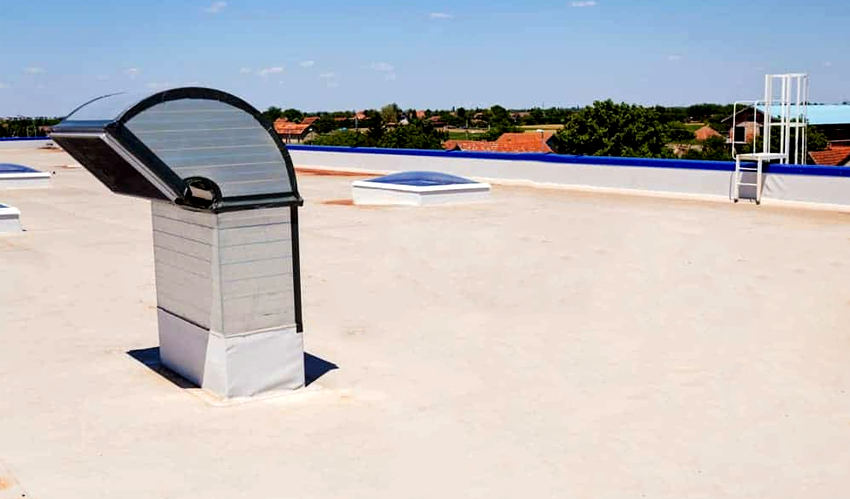
Cool roofs are ideal for large commercial buildings, such as warehouses, factories, and shopping malls, as they can significantly reduce energy costs and improve indoor comfort for employees and customers.
Residential Buildings

Reflective and emissive cool roofs can also be used on residential buildings, including single-family homes and apartment complexes. They can help homeowners save on energy bills and improve the overall comfort of their homes.
Government Buildings:
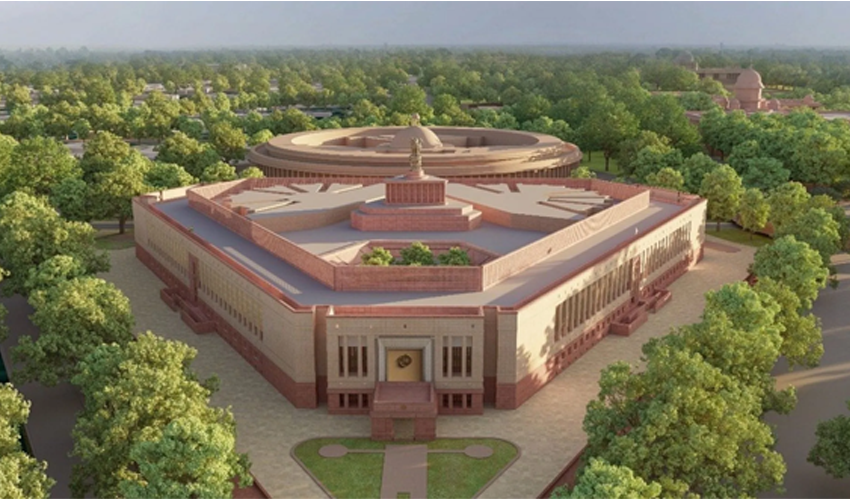
Cool roofs are becoming increasingly popular for government buildings, such as schools, hospitals, and offices, as they can help reduce energy costs and improve the indoor environment for employees and visitors.
Green Roofs

In addition to traditional cool roofs, reflective and emissive coatings can also be applied to green roofs, which are roofs that are covered with vegetation. This can help improve the energy efficiency of the building while also providing additional environmental benefits.
Reflective and emissive cool roofs are a cost-effective and environmentally friendly solution for improving the energy efficiency and comfort of a wide range of buildings.
Benefits of Cool Roofs
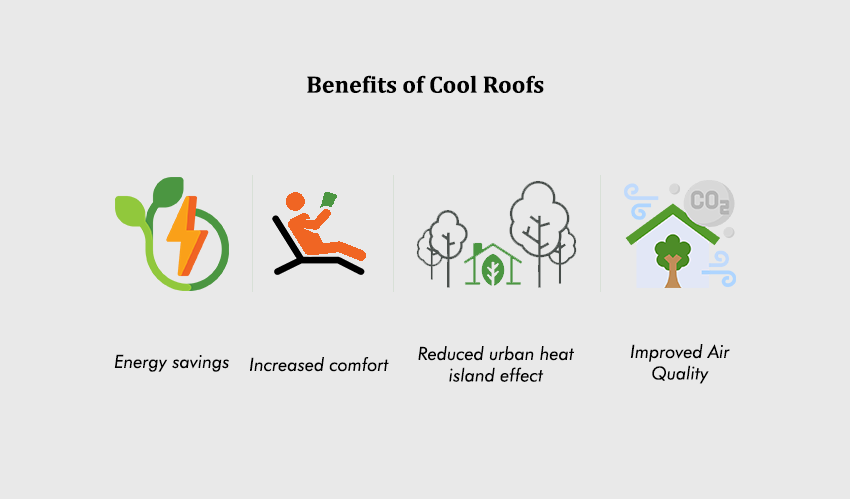
Cool roofs refer to roofs that reflect sunlight and heat away from buildings, reducing their overall temperature. Here are some of the benefits of installing cool roofs:
- Energy savings: Cool roofs can reduce energy consumption and lower air conditioning costs by up to 15-20% during peak summer months.
- Increased comfort: Buildings with cool roofs are generally more comfortable to be in, as they maintain a more stable temperature and reduce the need for air conditioning.
- Reduced urban heat island effect: Cool roofs can help reduce the heat island effect, which is when urban areas experience significantly higher temperatures than surrounding rural areas due to the absorption and re-emission of solar radiation.
- Improved air quality: Cool roofs can also help improve air quality by reducing the amount of smog and other pollutants that form as a result of high temperatures.
Overall, cool roofs can provide a cost-effective and sustainable solution for reducing energy consumption, improving building comfort, and mitigating the negative impacts of urban heat islands.
Factors to Consider for Cool Roof Installation

Cool roofs have become increasingly popular due to their ability to reduce energy costs and lower the overall temperature of buildings. Cool roofs are designed to reflect sunlight and absorb less heat, which can significantly reduce the amount of energy needed to cool a building. If you are considering installing a cool roof, here are some factors to consider:
- Material: The material used for the roof will have a significant impact on its effectiveness. Cool roofs are typically made of highly reflective materials such as tiles, metal, or asphalt shingles coated with reflective pigments or granules. Each material has its pros and cons, so it’s important to research and choose the best option for your specific needs and budget.
- Colour: The colour of the roof can also impact its cooling effectiveness. Light-coloured roofs reflect more sunlight and absorb less heat, while dark-coloured roofs absorb more heat. If you live in a cooler climate, a darker colour may be more suitable to help retain heat, while in warmer climates, a lighter colour would be more beneficial.
- Slope: The slope of the roof can also impact the effectiveness of a cool roof. A steeper slope allows for better water drainage and airflow, which can help to reduce the heat absorbed by the roof. However, a flat roof may also be suitable with the right materials and installation techniques.
- Insulation: The insulation in the roof can also impact its cooling effectiveness. Adequate insulation can help to reduce heat transfer between the roof and the interior of the building, which can improve energy efficiency and comfort.
- Maintenance: Like any other roof, a cool roof requires regular maintenance to remain effective. Proper maintenance can help to prevent damage and ensure that the roof continues to reflect sunlight and absorb less heat.
- Cost: The cost of installation can also be a factor to consider. Cool roofs can be more expensive to install than traditional roofs, but the potential energy savings over time can make up for the initial cost.
Overall, a cool roof can be a smart investment for homeowners and businesses looking to reduce energy costs and improve comfort. By considering the factors listed above, you can make an informed decision about the best type of cool roof for your specific needs and budget.
Cool Roof Installation Process
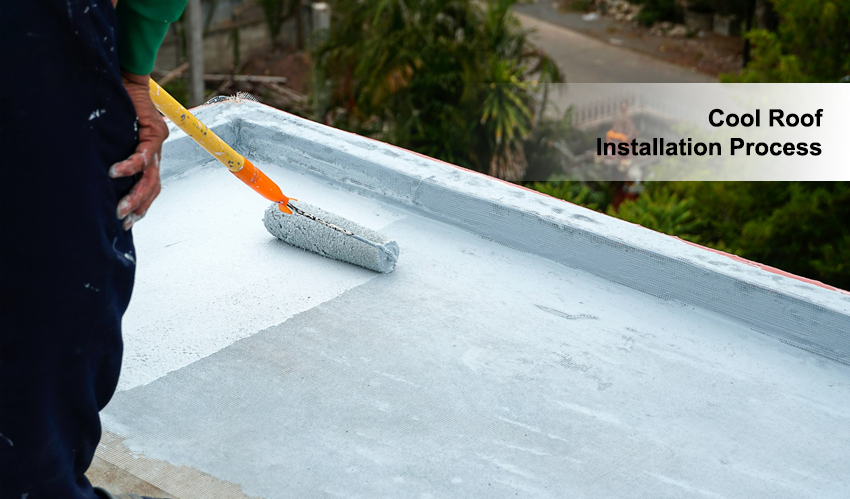
Cool roofs are becoming increasingly popular as a way to save energy and reduce the impact of heat on buildings. Cool roofs reflect more sunlight and absorb less heat than traditional roofs, which can significantly reduce the amount of energy needed for cooling. If you’re considering a cool roof for your building, here’s what you can expect from the installation process.
Evaluation of the Existing Roof
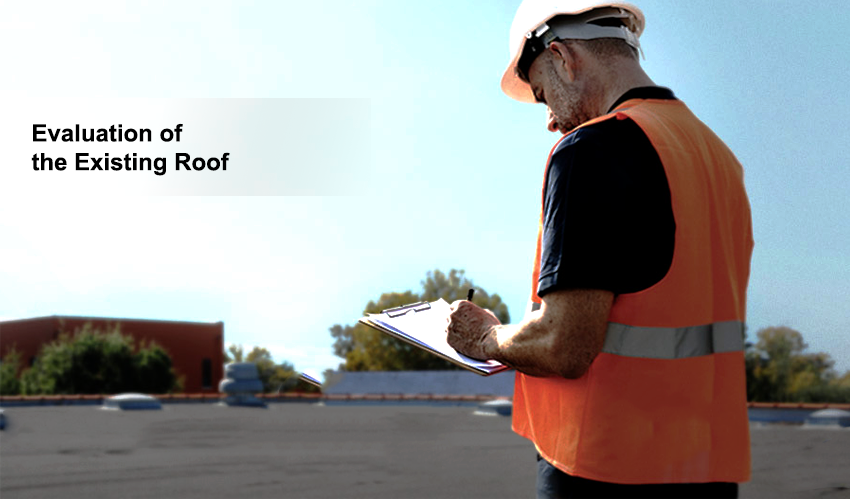
Before the installation of a cool roof, the existing roof needs to be evaluated to determine whether it can support the new system. The evaluation includes checking for leaks, damages, and necessary repairs to be done.
Choosing the Material
Cool roofs can be made of various materials such as reflective coatings, single-ply membranes, and tiles. The choice of material depends on several factors such as the roof type, climate, and building codes.
Surface Preparation

Once the material has been chosen, the roof surface must be prepared for installation. This typically involves cleaning the surface and removing any debris or existing coatings.
Installation
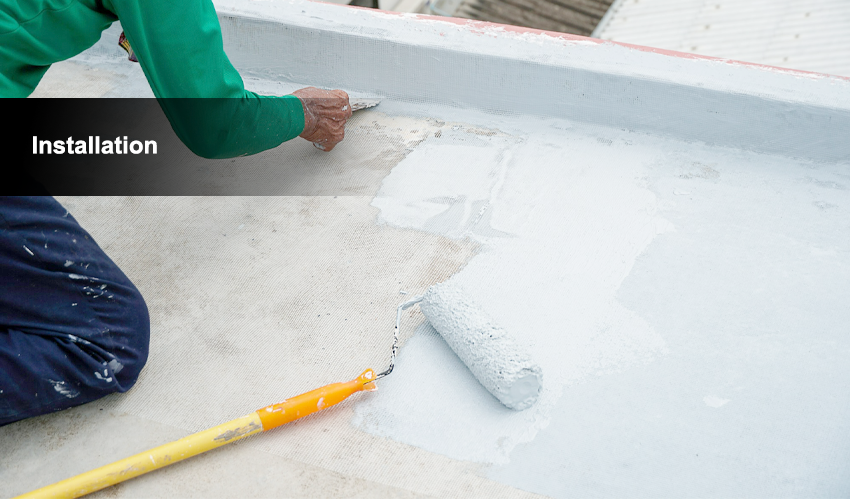
The installation process varies depending on the type of material being used. For reflective coatings, the material is sprayed or rolled onto the roof surface. For single-ply membranes, the membrane is laid over the roof surface and adhered with adhesive or fasteners. For tile roofs, the existing tiles are removed, and the new reflective tiles are installed.
Final Inspection
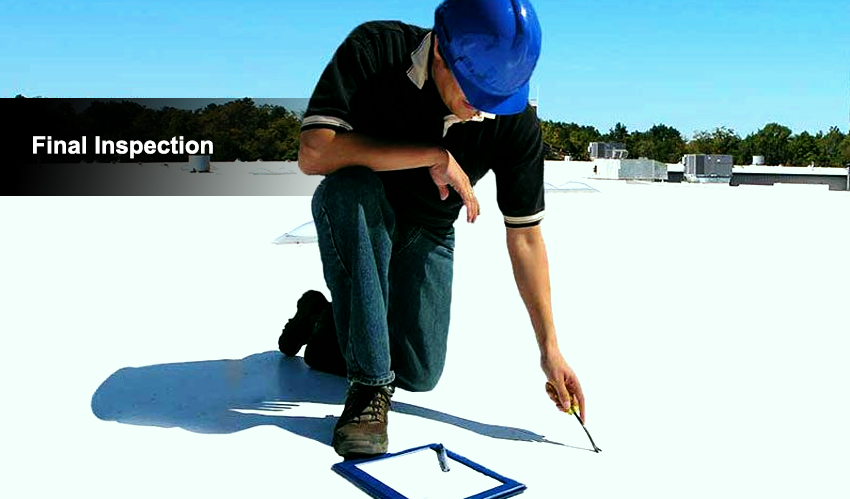
After the installation is complete, a final inspection is carried out to ensure that everything is installed according to the manufacturer’s instructions and meets building codes. The inspection may also include a thermal imaging scan to ensure there are no leaks or hotspots.
Cool roofs offer several benefits, including energy savings and reduced heat island effects. Installing a cool roof is a complex process that requires careful evaluation, material selection, surface preparation, and installation.
Maintenance of Cool Roofs
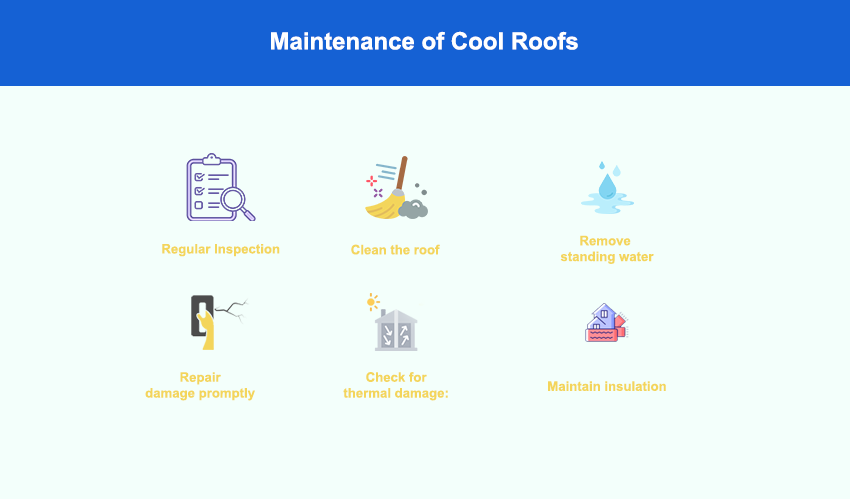
Cool roofs are an excellent solution to reducing heat absorption and energy costs in buildings. However, like any other roofing material, they require proper maintenance to ensure their longevity and efficiency.
- Regular Inspection: Inspect your cool roof regularly to detect any issues such as leaks, cracks, or punctures. These problems can damage the roof membrane and lead to decreased energy efficiency.
- Clean the roof: Debris, dirt, and dust can accumulate on the roof and reduce its reflectivity. Clean the roof with a soft-bristled brush, a low-pressure washer, or a broom to remove the debris.
- Remove standing water: Standing water on a cool roof can cause damage and promote the growth of algae or moss. Make sure to remove standing water by improving drainage or using a squeegee.
- Repair damage promptly: Any damage to the cool roof should be repaired promptly to prevent it from spreading and causing more significant problems. Hire a professional roofer to repair any damage to the roof.
- Check for thermal damage: Over time, thermal damage can occur to a cool roof due to constant exposure to the sun’s heat. Check for signs of cracking or blistering and repair them as soon as possible.
- Maintain insulation: Proper insulation is crucial for the efficiency of a cool roof. Ensure the insulation is installed correctly and inspect it regularly for any damage.
Maintaining a cool roof requires regular inspection, cleaning, and repairs. By following these simple steps, you can extend the life of your cool roof and keep it energy-efficient.
Cost of Cool Roof Installation

Cool roofs have become increasingly popular in India due to their ability to reduce indoor temperatures, lower energy costs, and reduce the urban heat island effect. If you’re interested in installing a cool roof on your home or building, you’re likely wondering about the cost. The cost of a cool roof installation in India depends on several factors, including the size of the roof, the type of materials used, and the location of the building. In general, cool roof installations can cost anywhere from Rs. 100-300 per square foot.
Here’s a breakdown of some of the costs involved in cool roof installation:
- Material Costs: The cost of cool roof materials can vary widely depending on the type of material you choose. Some popular options in India include reflective paints, tiles, shingles, and membranes.
- Labour Costs: The cost of labour will depend on the size of the roof and the complexity of the installation. For a simple installation, labour costs may be relatively low, but for a more complex installation, you can expect to pay more.
- Additional Costs: In addition to the materials and labour costs, there may be additional costs associated with cool roof installation, such as permits and inspections.
It’s important to note that while cool roof installations can be more expensive upfront, they can save you money in the long run by reducing your energy costs. Additionally, many governments in India offer incentives and subsidies for cool roof installations, which can help offset some of the costs.
Summary: Benefits of Cool Roofs

The installation of a cool roof is crucial for many reasons. First and foremost, it helps to reduce the amount of heat that a building absorbs, which can lead to lower energy costs and a more comfortable indoor environment. Additionally, cool roofs can help to mitigate the urban heat island effect, which occurs when cities and urban areas absorb and radiate heat, leading to higher temperatures and increased energy demand.
But the benefits don’t stop there. Installing a cool roof can also help to extend the lifespan of your roof by reducing thermal shock, which occurs when a roof rapidly expands and contracts due to temperature changes. This can lead to cracks and other forms of damage over time. By reducing the amount of heat absorbed by the roof, cool roofs can help to minimize thermal shock and increase the longevity of your roof.